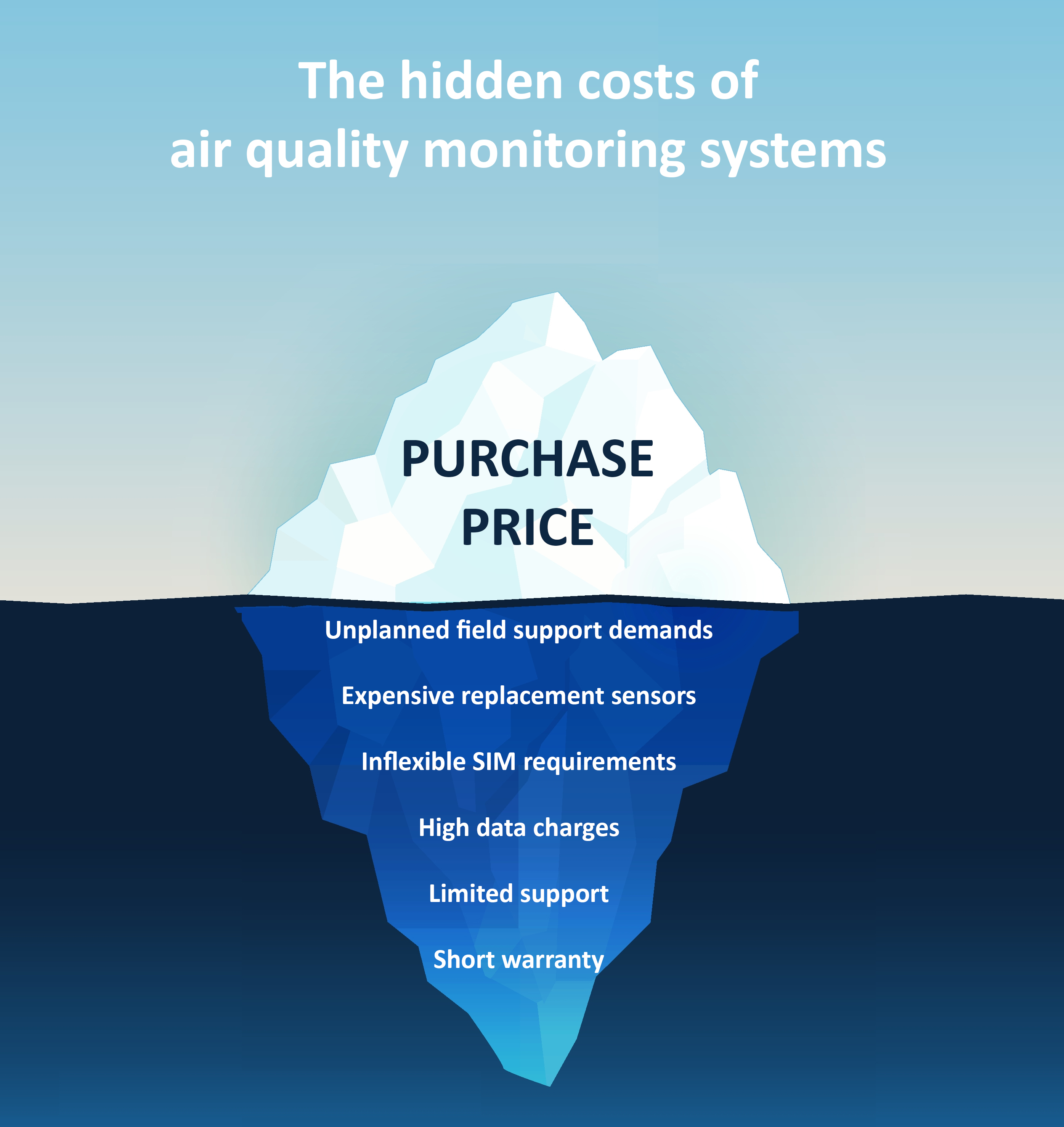 AQMesh has been used extensively in and around data centres for two main reasons: obligation to monitor emissions from back-up generators and the risk to copper components from hydrogen sulphide.
AQMesh has been used extensively in and around data centres for two main reasons: obligation to monitor emissions from back-up generators and the risk to copper components from hydrogen sulphide.
Monitoring emissions from back-up generators
Data centres accommodate core IT and computing services and infrastructure, offering businesses space and power to house their data in a secure, 24/7 supervised, temperature-controlled facility. Such facilities must have a back-up power supply to ensure data is stored securely, in case of mains electricity power failure. Back-up power is generally provided by diesel-powered generators. As diesel fumes are classed as carcinogenic by the World Health Organisation and other bodies, data centres using generators in the UK must provide information to the Environment Agency regarding pollution from their back-up generators when exceedances are identified. The key components of diesel exhaust are oxides of nitrogen – NO, NO2, NOx – and particulate matter, with PM2.5 most often measured.
AQMesh pods can monitor at any specific location, as necessary to identify and report exceedances of air pollutants, including NO2 and PM2.5. Generator fumes come from a single source and tend to be highly localised, with mixing in air affected by wind speed and direction. A network of AQMesh pods can be easily set up, using a range of power sources, depending on availability of a local power supply, including mains, battery and solar power. Alerts can be set to the required exceedance levels, with appropriate averaging of readings, to ensure compliance and minimise the risk of false alarms.
Air pollution may be produced by sources other than generators, such as nearby road traffic or construction activity. Analysis of measurements from such a network can provide information about likely pollution sources, by looking at relative concentrations of pollutants across the site. This is enhanced if wind speed and direction is used, helping to identify whether measurements are upwind or downwind of a source, with the likely scale and direction of the source identified.
One data centre using AQMesh was able to show that traffic diversions around the trading estate were causing pollutant spikes rather than their generators. This AQMesh user had installed a solar-powered pod, with the wind speed and direction option, on the roof of the facility. Wind speed and direction data is pulled into the same data stream as pollutant gases, easing the analysis process. The customer is also using a new technique to scale their AQMesh network to nearby reference stations on a six-monthly basis, to demonstrate data traceability and accuracy.
Sixteen data centres in UK and Europe are using AQMesh to detect air quality issues. Many other operations which use generators for back-up or to power core activities, such as construction sites, protect staff and nearby populations by monitoring air pollution on a 24/7 real-time basis. Readings are typically a 15-minute average but can be as short as one minute, to identify short-term spikes.
Monitoring hydrogen sulphides to prevent short-circuits
Hydrogen sulphide (H2S) in the air - which can come from a number of sources - is a particular risk to information technology, as it can damage copper circuitry. H2S, and sulphur dioxide (SO2), in the air can form a weak acid. This risk is growing worldwide, with more compact circuitry increasing the risk of short-circuits, and more data centres being located in areas with higher levels of H2S and SO2 in the air.
Airborne sulphur causes copper dendrites to form on electronic components, causing short circuits and therefore potentially data errors. H2S attacks copper, forming thin films of metallic sulphides - dendrite whiskers - which speed up corrosion, so some data centres monitor H2S outdoors, near air intakes, and internally within UPS rooms to avoid sulphur-induced degradation in power modules. These gaseous contaminants can lead to deterioration of silver solder as well as copper surfaces on computer circuit boards, leading to intermittent and hard errors, caused by either impeding the flow of electricity or forming unintended circuit paths. This ASHRAE article goes into more depth on the subject.
Data centres focus on filtration for particles and management of temperature and humidity, but gases in the air may bypass such filtration systems. One method of monitoring for potential corrosion is to expose silver and copper coupons to the air in the server centre and measure corrosion over a month. This is an effective methodology, but the results of the month-long test may arrive too late to prevent damage. Monitoring of the air coming into the building allows real-time notification of elevated levels of H2S and SO2, allowing action to be taken before polluted air enters the data centre.
AQMesh pods can be installed quickly on site, with secure data available online or by API. Pods can be shipped worldwide with a two-week manufacture and test lead time, with rental options offered.


